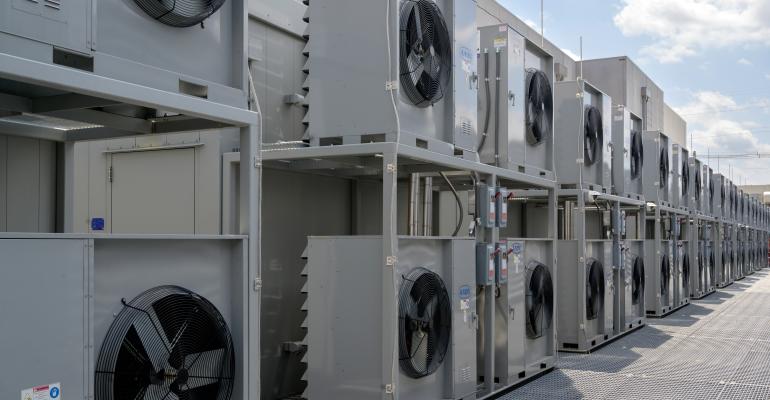Data center cooling is at the center of CyrusOne’s innovative designs, including data centers for artificial intelligence, with two primary reasons in mind: savings and sustainability. Beyond energy savings, cooling can also extend the lifespan of computing and storage components. Reducing costs and environmental impact are important to CyrusOne and our customers. But designs today must be viable for decades to come.
One effective cooling technology is a closed-loop chilled water system that uses energy-efficient chillers. Through extensive modeling, the closed-loop system provides sufficient cooling while consuming the least amount of electricity possible and only using an initial amount of water to prime the system. During cooler months, all or part of the cooling system can be run without running refrigerant compressors. By using renewable electricity, this system produces negligible carbon emissions with only small amounts coming from occasional backup generator use and refrigerant loss. It consumes no additional water and uses a small amount of electricity. Thus, it is carbon, energy, and water efficient. Additionally, several cooling methods can be deployed at the rack level, depending on the application.
Right-sizing data center design, along with proper cooling distribution, can also achieve efficiency and sustainability. Right-sizing entails operators and building management systems working to prevent and solve mismatches in supply and return air and water temperatures to normal levels. Operators are constantly monitoring the data center systems, working to provide the most efficient environment without sacrificing reliability.
Aside from sustainability benefits, data center providers that invest in efficient cooling technology also realize improved resilience and cost savings. The cost-saving benefits are apparent. Reducing the use of expensive electricity can achieve significant savings; however, this cannot be at the cost of over-utilizing water.
While cost savings are important to data center providers and customers, resilience must remain priority one because uptime is crucial. From a risk standpoint, a water shortfall could completely shut down a facility that relies on evaporating water for cooling. By working to eliminate water-inefficient evaporative cooling in favor of air-cooled chillers, particularly in regions of high-water stress, data center providers can improve resilience to climate change and weather-related disruptions.
When designing for today, we must consider what the future could bring. Water could be plentiful and inexpensive today, but it could be less available and more costly decades from now. Renewable electricity may not be appealing now, but a carbon tax will certainly push electricity prices to rise, and today’s long-term renewable deals could save millions in the future. Our best opportunities lie in analyzing trends and seeking ways to prepare for probable outcomes which will improve resilience and future-proof our data centers.
Over time, more data center providers will increasingly adopt more efficient cooling technologies which protect their operations from equipment breakdowns and also from future climate change threats. We must plan with eyes wide open, looking far into the future.
.png)




